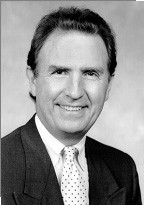AARP Hearing Center
Notice to Medicare observation patients misses the mark
By Claire Noel-Miller, Keith Lind, June 29, 2016 02:05 PM

If you’re one of the roughly 2 million Medicare beneficiaries placed under observation each year, there’s (potentially) good news for you: You may be less vulnerable to sticker shock when you get your medical bill. But Medicare hasn’t gotten the details right just yet.
In less than two months, the Notice of Observation Treatment and Implication for Care Eligibility ( NOTICE) Act will require hospitals nationwide to notify Medicare observation patients that they are not formally admitted as inpatients and why. Clinicians will also have to explain how Medicare covers people under observation and clarify that a “non-inpatient” status may have personal cost implications. The law leaves out non-observation outpatients such as emergency room patients.
The newly required form is crucially important: it should help observation patients avoid ugly financial surprises.
But, people under observation probably won’t be pleased with this standard observation notice that’s supposed to explain it all. That form, recently unveiled by Medicare officials fleshing out the law, does not tell patients what they really need to know.
Blindsided by medical bills
Inpatients have a simple cost equation: they pay a fixed amount ($1,288 in 2016). Those under observation, however, pay some of the cost for each medical service they receive—with no limit on their total hospital bill. What’s more, Medicare does not pay for observation patients’ follow-up care in a skilled nursing facility. That’s because Medicare requires that people spend at least three consecutive days as hospital inpatients before covering those costs.
The result? Observation status can create significant financial hardship for countless Medicare beneficiaries. Our recent analysis found that 10 percent of observation patients owe the hospital more than they would as inpatients. Some later incur thousands of dollars more for care in a skilled nursing facility.
Form tries—but falls short
The standard observation form falls short of what consumers need. Here’s how:
Confusing. Most people will have an extremely hard time understanding the form- especially explanations of Medicare’s observation coverage rules.
No personalized explanation of status. The cookie-cutter form requires only a generic statement on why doctors are not formally admitting the patient.
Limited usage. Non-observation outpatients do not get the form, despite facing similar financial consequences as observation patients.
AARP has sent a letter pointing out these problems to Medicare officials.
Fortunately, Medicare can still - and should - fix the form to give people under observation and other outpatients clear and meaningful information. This would fulfill both the spirit and the letter of the NOTICE Act.
Photo: http://istockpho.to/295QqGp

Claire Noel-Miller is a senior strategic policy adviser for the AARP Public Policy Institute, where she provides expertise in quantitative research methods applied to a variety of health policy issues related to older adults.

Keith Lind is a senior strategic policy adviser for the AARP Public Policy Institute, where he covers issues related to Medicare post-acute care and chronic care.































































